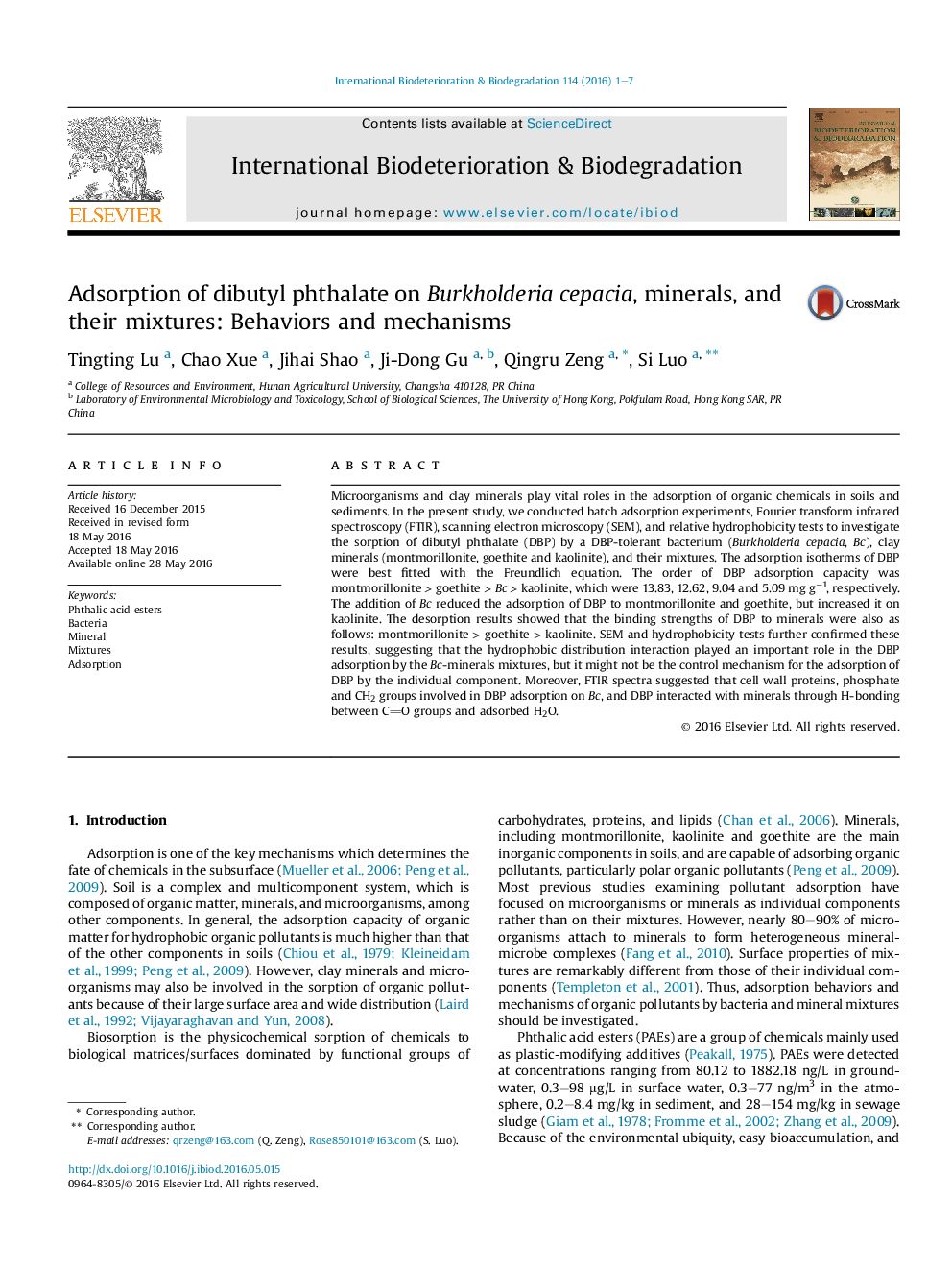| کد مقاله | کد نشریه | سال انتشار | مقاله انگلیسی | نسخه تمام متن |
|---|---|---|---|---|
| 4364116 | 1616303 | 2016 | 7 صفحه PDF | دانلود رایگان |

• 36.18%, 50.48%, 20.36%, and 55.31% of DBP was removed by Bc, goethite, kaolinite, and montmorillonite.
• Adsorption of DBP on Bc-goethite and Bc-montmorillonite were increased by 1.10 and 1.83 mg g−1.
• The cell wall proteins, phosphate and CH2 groups are involved in adsorption on Bc.
• Hydrophobic interactions played a key role in adsorption of DBP to mixtures.
Microorganisms and clay minerals play vital roles in the adsorption of organic chemicals in soils and sediments. In the present study, we conducted batch adsorption experiments, Fourier transform infrared spectroscopy (FTIR), scanning electron microscopy (SEM), and relative hydrophobicity tests to investigate the sorption of dibutyl phthalate (DBP) by a DBP-tolerant bacterium (Burkholderia cepacia, Bc), clay minerals (montmorillonite, goethite and kaolinite), and their mixtures. The adsorption isotherms of DBP were best fitted with the Freundlich equation. The order of DBP adsorption capacity was montmorillonite > goethite > Bc > kaolinite, which were 13.83, 12.62, 9.04 and 5.09 mg g−1, respectively. The addition of Bc reduced the adsorption of DBP to montmorillonite and goethite, but increased it on kaolinite. The desorption results showed that the binding strengths of DBP to minerals were also as follows: montmorillonite > goethite > kaolinite. SEM and hydrophobicity tests further confirmed these results, suggesting that the hydrophobic distribution interaction played an important role in the DBP adsorption by the Bc-minerals mixtures, but it might not be the control mechanism for the adsorption of DBP by the individual component. Moreover, FTIR spectra suggested that cell wall proteins, phosphate and CH2 groups involved in DBP adsorption on Bc, and DBP interacted with minerals through H-bonding between CO groups and adsorbed H2O.
Journal: International Biodeterioration & Biodegradation - Volume 114, October 2016, Pages 1–7